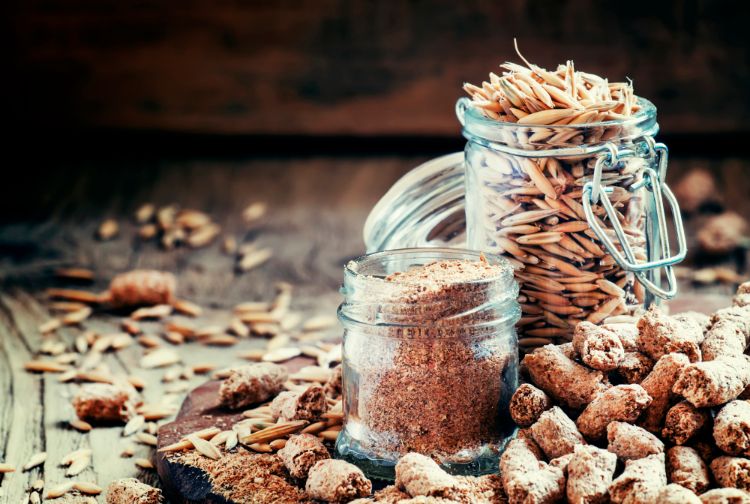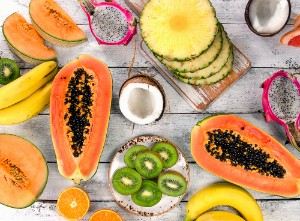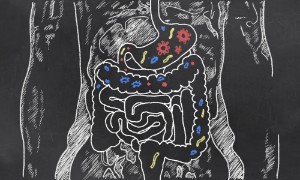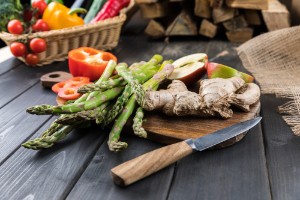Which foods contain the most fiber – Top 30
Fiber is coarse plant fibers that are not digested by digestive enzymes in the body, but at the same time are food for beneficial bacteria in the intestine.
Dietary fiber can be soluble and insoluble (more about the types in of this article ). Both types of fibers not only normalize the course of digestive processes, restore intestinal microflora and eliminate flatulence and constipation, but also have a beneficial effect on the health of the whole body: they reduce sugar and cholesterol levels, maintain blood pressure within the limits of normative values.
You can get dietary fiber from most of the usual foods. Below is a list of the 30 main foods that are most rich in fiber, indicating its specific content in grams.
Content
1-4: Seeds and nuts
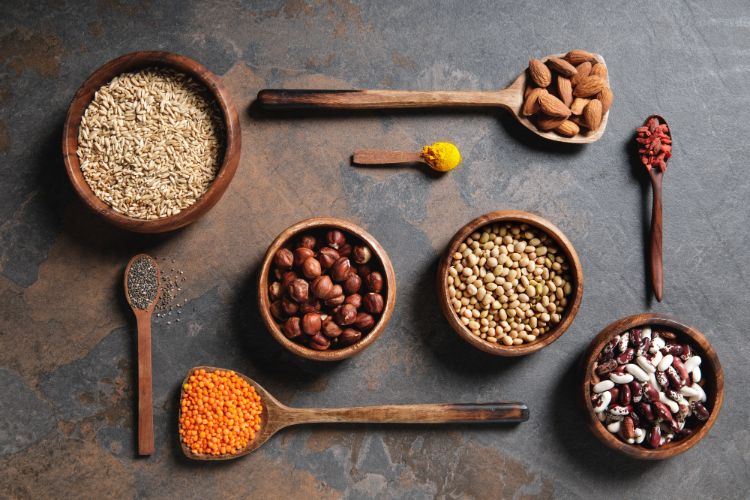
Almost all seeds and nuts are high in dietary fiber. In addition, nuts have a special set of useful properties: prevention of diabetes mellitus and atherosclerosis, improvement of metabolism and microcirculation. American Studies have also demonstrated that nuts help prevent the development of fatal cardiovascular complications.
1. Chia Seeds (33.4%)
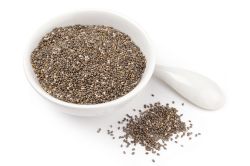 Fiber: 34.4 grams per 100 grams.
Fiber: 34.4 grams per 100 grams.
Chia seeds contain the most dietary fiber on the planet.
They also contain a lot of omega-3 and omega-6 fatty acids, which have a beneficial effect on Heart and vascular health , prevent the development of atherosclerosis and the formation of parietal blood clots.
2. Pumpkin Seeds (18.0%)
 Fiber: 18.0 grams per 100 grams.
Fiber: 18.0 grams per 100 grams.
Pumpkin seeds are the main suppliers of valuable polyunsaturated and monounsaturated fatty acids, magnesium, zinc, arginine, as well as vitamins A and E.
When used, there is an improvement in the aesthetic properties of the skin (increased smoothness and elasticity), a decrease in blood pressure and glucose levels in blood plasma.
3. Almonds (12.5%)
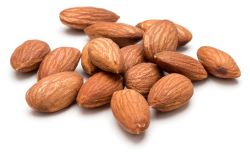 Fiber: 12.5 grams per 100 grams or 0.25 grams per 1 medium-sized nut.
Fiber: 12.5 grams per 100 grams or 0.25 grams per 1 medium-sized nut.
Almonds are the most popular variety of nuts. Almonds contain valuable fats, manganese, magnesium and vitamin E in large quantities. Promotes cleansing of blood vessels , reducing the level of total cholesterol in the blood. With systematic consumption, there is a decrease in body weight.
4. Bulgur wheat (4.5%)
Fiber: 4.5 grams per 100 grams.
Is a whole grain product popular in Middle Eastern countries. It is used as an alternative to the usual rice in salads.
5-13: Vegetables
Most vegetables contain a lot of dietary fiber, as well as vital vitamins, micro- and macronutrients that support all types of metabolism and accelerate tissue regeneration.
5. Artichoke (6.9%)
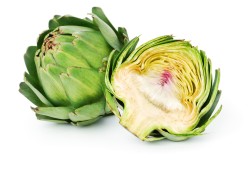 Fiber: 6.9 grams per 100 grams or 8.2 grams per medium-sized artichoke.
Fiber: 6.9 grams per 100 grams or 8.2 grams per medium-sized artichoke.
Artichoke has a balanced composition of nutrients. It contains vitamins (groups B: B1, B2, B3; C, P, K), and calcium.
Helps to maintain Liver health and kidneys, prevents the manifestation of dystrophic and destructive diseases on the part of these organs.
Artichokes are usually baked, steamed or fried. They go well with any dishes.
6. Potatoes (6.3%)
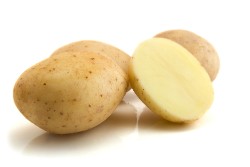 Fiber: 6.3 grams per 100 grams or 6.0 grams per medium-sized root vegetable.
Fiber: 6.3 grams per 100 grams or 6.0 grams per medium-sized root vegetable.
The vegetable is an affordable source of vitamins B and C, as well as magnesium.
Has a beneficial effect on the course of diseases such as chronic inflammation of the gastric mucosa, peptic ulcer of the stomach and duodenum, arthritis of any etiology, gout.
7. Sweet Potatoes (5.9%)
 Fiber: 5.9 grams per 100 grams or 8.9 grams per medium-sized root vegetable.
Fiber: 5.9 grams per 100 grams or 8.9 grams per medium-sized root vegetable.
Contains a lot of fiber, vitamins (groups B, A, C), carotenoids.
Helps to reduce total cholesterol and the concentration of low and very low density lipoproteins, increases stability of the inner wall of blood vessels to various aggression factors (exposure to cholesterol and glucose).
8. Parsnips (5.8%)
Fiber: 5.8 grams per 100 grams.
The plant contains a lot of vitamin C and K, and is considered a valuable supplier of calcium and zinc to the human body. It is used as one of the main products in a low-calorie diet in the presence of pathologies such as urolithiasis and cholelithiasis, pneumonia and chronic bronchitis.
Promotes improve digestion and the work of the intestine due to the normalization of production of enzymes into the intestinal lumen.
9. Broccoli (5.1%)
 Fiber: 5.1 grams per 100 grams.
Fiber: 5.1 grams per 100 grams.
Broccoli has pronounced antioxidant properties: it prevents the development of malignant neoplasms in any tissues of the body, slows down aging, improves the aesthetic properties of the skin. It also contains a lot of vitamin A and C.
10. Pumpkin (3.8%)
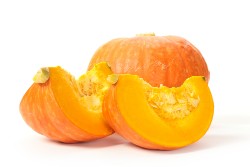 Fiber: 3.8 grams per 100 grams.
Fiber: 3.8 grams per 100 grams.
Despite the fact that pumpkin is more than 90% water, it contains a rare vitamin T – an important regulator of energy metabolism in the body. Pumpkin is also enriched with vitamins A, C, E, D and group B.
Pumpkin accelerates overall metabolism, improves Enzymatic cleavage and absorption of nutrients from the lumen of the digestive tract, reduces the risk of death from cardiovascular complications.
11. Carrots (3.6%)
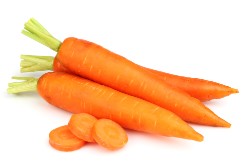 Fiber: 3.6 grams per 100 grams or 3.1 grams per medium-sized carrot.
Fiber: 3.6 grams per 100 grams or 3.1 grams per medium-sized carrot.
Carrots contain a lot of magnesium, vitamins B6 and K, as well as beta-carotene, which is transformed into vitamin A in the body and has a significant positive effect on the health of the visual apparatus.
12. Beetroot (3.6%)
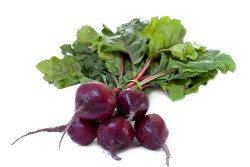 Fiber: 3.6 grams per 100 grams or 8.4 grams per medium-sized beetroot.
Fiber: 3.6 grams per 100 grams or 8.4 grams per medium-sized beetroot.
The root vegetable is rich in a variety of nutrients, leading in folate, copper, iron, manganese and potassium.
Beetroot juice, according to Australian scientists , saturated with inorganic nitrates, which maintain blood pressure levels, inhibit allergic and autoimmune reactions, activate platelet synthesis at the level of red bone marrow .
13. Brussels Sprouts (3.5%)
 Fiber: 3.5 grams per 100 grams.
Fiber: 3.5 grams per 100 grams.
Brussels sprouts have almost the same set of beneficial properties as broccoli. It is an important source of vitamin K, potassium and folate, prevents the formation of cancer cells (has antioxidant properties).
14-20: Fruits and Berries
Significant amounts of dietary fiber can be obtained from most fruits and berries that grow on all continents of the globe. Individual representatives are leaders in the content of dietary fiber.
14. Avocado (9.2%)
 Fiber: 9.2 grams per 100 grams or 18.4 grams per medium-sized avocado.
Fiber: 9.2 grams per 100 grams or 18.4 grams per medium-sized avocado.
The fruit contains over 20 vitamins and minerals. Especially important are folic and ascorbic acids, potassium, copper, and tocopherol. Polyunsaturated fats, which occupy up to 30% of the volume of the fetus, are of great importance.
Avocado helps to reduce total cholesterol and bring its individual fractions to the proper values, prevents the development of diabetes mellitus and atherosclerosis of large arteries.
15. Pear (5.5%)
 Fiber: 5.5 grams per 100 grams or 11.0 grams per medium-sized pear.
Fiber: 5.5 grams per 100 grams or 11.0 grams per medium-sized pear.
Pear goes well with any desserts, contains a lot of fructose (it does not require insulin for absorption), folic acid, vitamins C and A.
Pear is recommended for use in the presence of various diseases pancreas , has a beneficial effect on the general condition of obesity and diabetes mellitus.
16. Apple (5.4%)
 Fiber: 5.4 grams per 100 grams or 9.72 grams per medium-sized apple.
Fiber: 5.4 grams per 100 grams or 9.72 grams per medium-sized apple.
Apples, like most fruits, are important suppliers of folic acid, as well as vitamins A and C.
It is recommended to eat the fruit together with the peel, since it contains most of the dietary fiber.
Systematic addition of apples to the diet has a beneficial effect on Digestive system health , helps to prevent the development of atherosclerosis and oncological diseases.
17. Raspberries (4.0%)
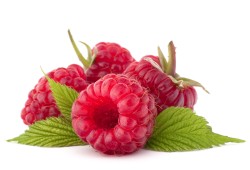 Fiber: 4.0 grams per 100 grams.
Fiber: 4.0 grams per 100 grams.
The berry has a significant set of antioxidant components. Raspberries contain a large amount of vitamins C and K.
Adding fresh raspberries to various salads prevents the appearance of malignant neoplasms, improves skin health.
18. Prunes (3.4%)
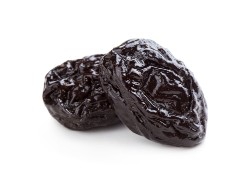 Fiber: 3.4 grams per 100 grams.
Fiber: 3.4 grams per 100 grams.
Dried plums have a positive effect on the digestive system: they effectively eliminate constipation, increase the bioavailability of proteins and carbohydrates supplied with food.
It is not recommended to eat prunes with pathologies of the glycemic background, since it contains a significant amount of sugar.
19. Orange (3.4%)
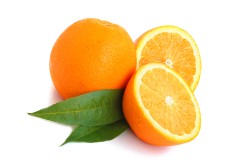 Fiber: 3.4 grams per 100 grams or 5.1 grams per medium-sized orange.
Fiber: 3.4 grams per 100 grams or 5.1 grams per medium-sized orange.
Orange is a unique and extremely healthy fruit. It contains: vitamins (B1, B2, B5, B5, C, PP, A), micro- and macronutrients (potassium, calcium, magnesium, iron, phosphorus and sodium).
The product accelerates the motor activity of the digestive tract, prevents the processes of fermentation and putrefaction of chyme, promotes strengthen the general immune system and lowering cholesterol in blood plasma. Orange consumption reduces the risk of sudden vascular mortality by 1.5 times.
20. Banana (2.6%)
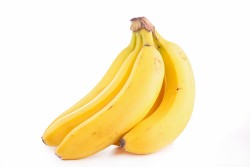 Fiber: 2.6 grams per 100 grams or 3.12 grams per medium-sized banana.
Fiber: 2.6 grams per 100 grams or 3.12 grams per medium-sized banana.
Bananas contain a lot of vitamin C, potassium and magnesium.
It is recommended to replace snacks with this fruit or add it to fruit salads. Banana improves neuromuscular transmission of impulses, improves blood supply to the brain .
21-30: Legumes
Legumes are leaders in the content of valuable digestive fibers, and also have a wide range of beneficial properties. Their high effectiveness against type II diabetes mellitus and obesity has been noted.
21. White Beans (10.5%)
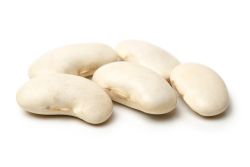 Fiber: 10.5 grams per 100 grams.
Fiber: 10.5 grams per 100 grams.
White beans are widespread in almost all countries. It is rich in proteins, B vitamins and folic acid. It is added to salads or meat dishes to increase nutritional value.
22. Pinto Beans (9.0%)
Fiber: 9 grams per 100 grams.
Is one of the most popular products in the United States of America. Usually, mashed potatoes are made from beans, consumed in pure form or in the form of a side dish for meat products.
Pinto saturate the human body with valuable amino acids, calcium and iron, effectively eliminate constipation, normalize the content of total cholesterol and glucose in the blood.
23. Black beans (8.7%)
 Fiber: 8.7 grams per 100 grams.
Fiber: 8.7 grams per 100 grams.
Black beans are important sources of iron, magnesium and calcium, as well as protein (the product contains 9 essential amino acids). It is usually used for bone strengthening , prevention of atherosclerosis.
24. Peas (from 4.1 to 8.3%)
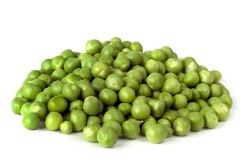 Fiber: from 4.1 to 8.3 grams per 100 grams.
Fiber: from 4.1 to 8.3 grams per 100 grams.
Peas contain a lot of iron and magnesium, which has a beneficial effect on the processes of digestion and synthesis of blood cells at the bone marrow level. It can be used for the treatment of iron deficiency anemia .
Is rich in vitamins A and C, which are responsible for maintaining the health of the skin, ensure the growth and restoration of vascular tissues, gums and bones. Vitamin C also has immunomodulatory properties .
Peas are available fresh or canned, and are the leader in consumption compared to other legumes. In Russian cuisine, it is used for making soups, mashed soups and porridges.
25. Lentils (7.9%)
 Fiber: 7.9 grams per 100 grams.
Fiber: 7.9 grams per 100 grams.
There are many different types of lentils: brown (suitable for soups and stews), green (perfectly combined with vegetable salads), red (used for mashed potatoes), black (serves as an excellent accompaniment for salads).
The plant contains a lot of valuable amino acids, folic and pantothenic acids. 100 g of lentils contains 14% of the daily requirement of vitamin B1, 28% copper, 25% phosphorus, 17% iron.
26. Mash or Mung beans (7.6%)
Fiber: 7.6 grams per 100 grams.
The homeland of the bean culture is India. Mung beans have a balanced composition of vitamins, micro- and macronutrients (C, B1, PP, B9, E, K, A, potassium, phosphorus, magnesium, iron, zinc, calcium, selenium, manganese and copper).
In folk medicine, mash is used to accelerate metabolism and eliminate symptoms of digestive disorders.
27. Azuki Beans (7.3%)
Fiber: 7.3 grams per 100 grams.
Azuki beans are a traditional Japanese dish. On its basis, pasta is made, which is a sweet dessert.
Contains a lot of vitamin B12, which stimulates erythropoiesis. According to some data, beans prevent the formation of cancer cells in the body, inhibit apoptosis.
28. Chickpeas or garbanzo beans (6.4%)
Fiber: 6.4 grams per 100 grams.
The plant is an important source of vegetable protein, iron and vitamin B6, which increases the bioavailability of proteins and fats from food, improves the course of metabolic processes in all tissues, causes an increase in skeletal muscle tone.
29. Purple Beans (6.3%)
Fiber: 6.3 grams per 100 grams.
This type of bean is a traditional dish of Georgian cuisine. It is able to change its color during heat treatment.
Contains a lot of iron, prevents the development of atherosclerosis and type II diabetes mellitus, thereby has a cardioprotective effect.
30. Soybeans (6.0%)
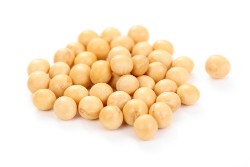 Fiber: 6.0 grams per 100 grams.
Fiber: 6.0 grams per 100 grams.
Soybeans are traditionally used to prepare dishes such as tofu, miso or tempeh.
It can be used as a dietary substitute for meat and dairy products (not inferior in amino acid composition). It goes well with any salads of vegetables or herbs.
Daily rate
Fiber must be present in the daily diet.
Recommended daily allowance for most women it is 25 g per day, for men it is about 38 g per day. Unfortunately, according to statistics , the majority of the population does not consume enough dietary fiber. It is extremely rare that the indicator exceeds 15-17 g per day.
Depending on gender and age, the body's dietary fiber needs vary. The minimum recommended amount of fiber (per day) is shown in the table below:
| Age (in years) | Norm per day (in grams) | |
| Men | Women | |
| from 9 to 13 | 31 | 26 |
| from 14 to 18 | 38 | 26 |
| from 19 to 30 | 38 | 25 |
| from 31 to 50 | 38 | 25 |
| from 51 to 70 | 30 | 21 |
| more than 70 | 30 | 21 |
With an initially inadequate intake of dietary fiber, they should be increased gradually to prevent the development of a number of side effects. These include: spastic pain in the lower abdomen, flatulence, stool disorders (more often – diarrhea, less often – constipation).
Proven beneficial properties
Canadian scientists have proved that indigestible fiber contributes to an increase in the number of beneficial microorganisms in the digestive tract.
Maintaining an adequate microbiocenosis leads to normalization of body weight, improves the functioning of the immune system, increases the body's resistance to external infectious agents and, of course, normalizes the course of digestive processes.
High Fiber Diet, according to research data , prevents the formation of constipation and helps to reduce glucose in blood plasma.
6 Tips on How to Consume More Fiber
Consider the main recommendations for increasing the fiber content in the diet:
- Eating whole grains and bran for breakfast. It is recommended to eat porridge based on whole grains (oatmeal, oatmeal) every morning. Buckwheat also contains fiber.
- Eating fruits and vegetables with the peel. It is in the "skin" that a significant amount of fiber is contained. The daily diet should contain about 300-350 g of fruits and 200-400 g of vegetables.
- Inclusion of legumes in the menu. Beans, peas and other crops are not inferior in terms of valuable nutrients and energy value to most food products.
- Replacing regular bread with whole grain (for example, rye). When baking bakery products independently, it is recommended to use coarse flour.
- Exclude white rice from the diet (especially polished). It is necessary to consume more brown rice.
- Give preference to starch-rich vegetables (potatoes, sweet potatoes).
Following simple tips will help bring fiber intake back to normal and maintain the health of the digestive system.
Conclusion
Thus, fiber is an extremely important component of a healthy diet. A menu with a high content of dietary fiber will improve the functioning of the gastrointestinal tract (eliminate dyspeptic disorders and, most importantly, prevent constipation). Fiber also has a beneficial effect on the health of the endocrine and cardiovascular systems.
In order to increase dietary fiber intake, it is recommended to include more whole grains, vegetables and fruits.

